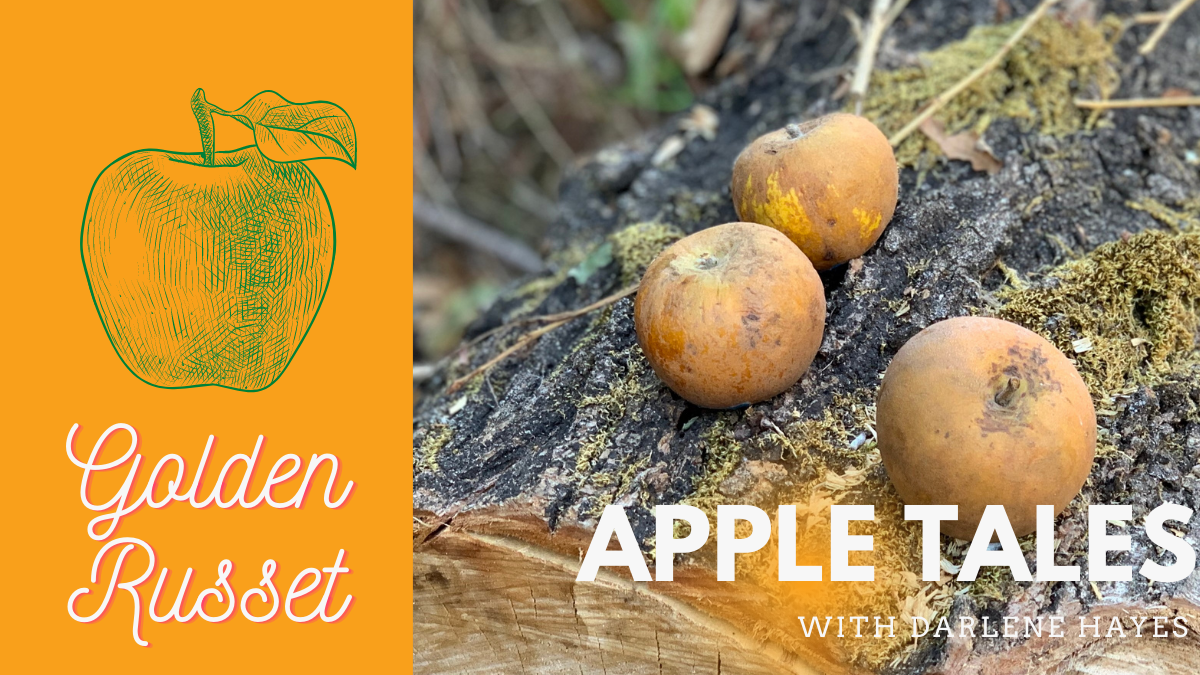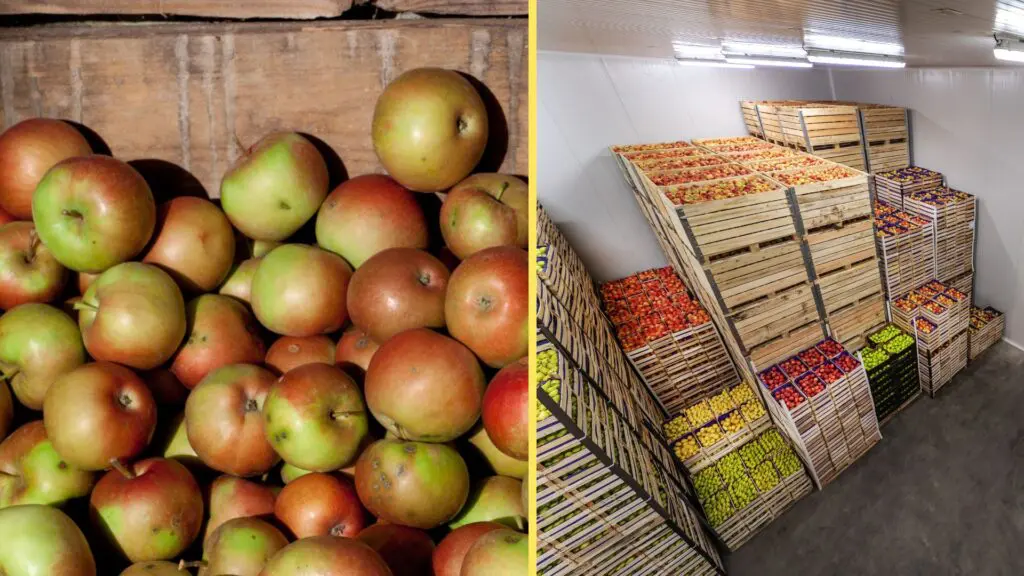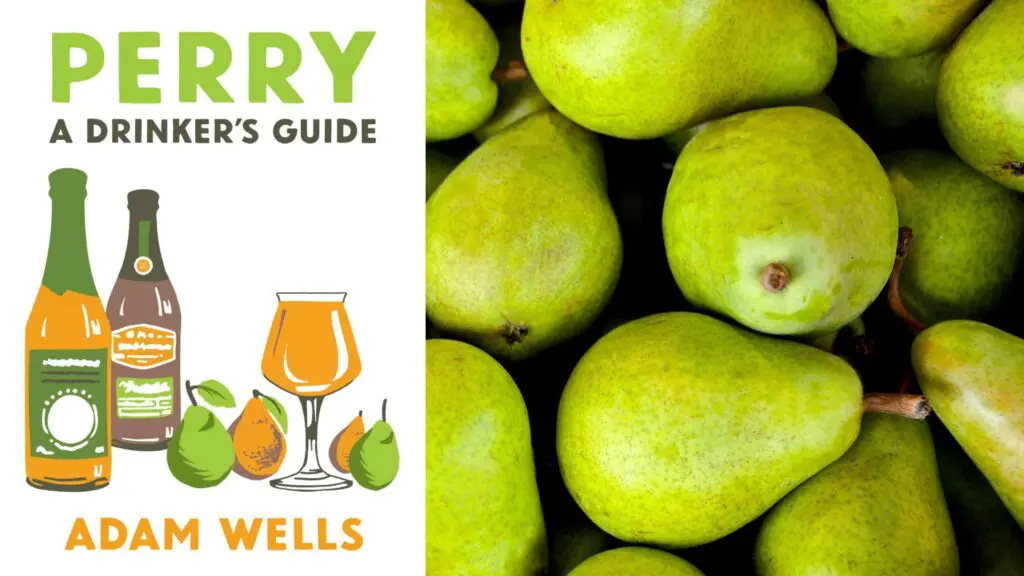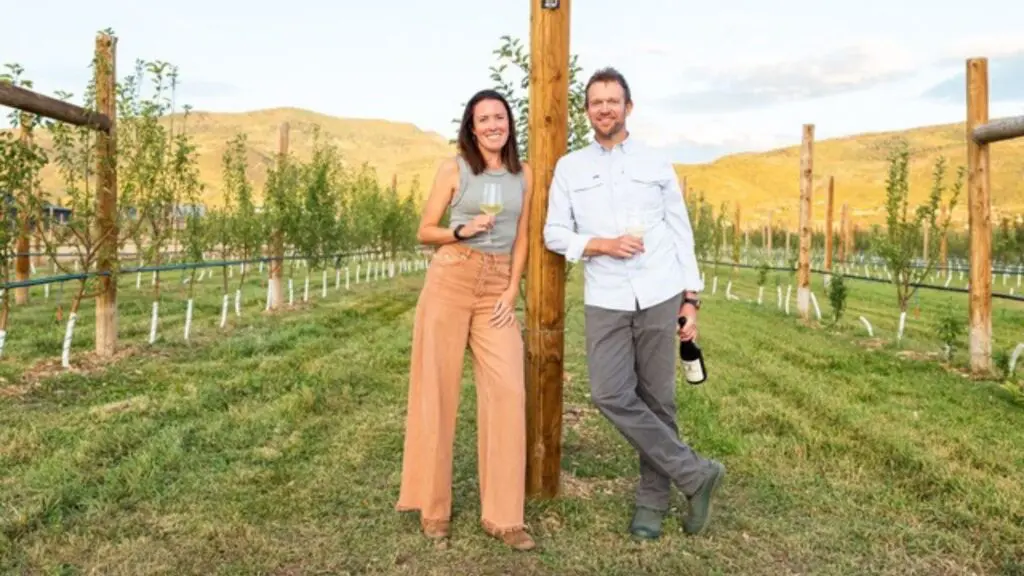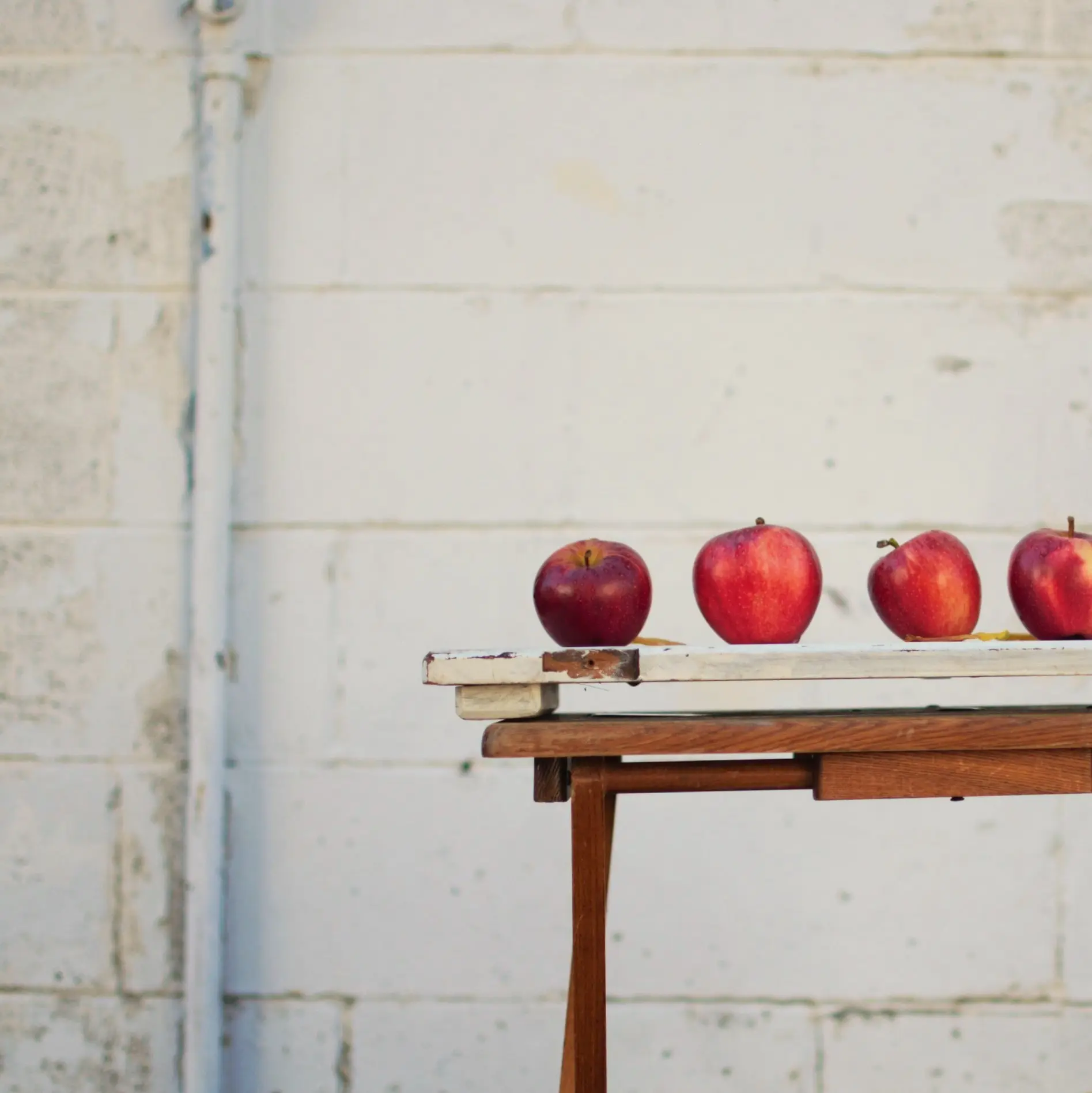Apple Tales with Darlene Hayes
My first deep dive into apple history came in 2017. I’d been asked to be part of an evening focused on the Golden Russet, which would include some history, a chance to sample fresh fruit from various orchards across the country, and drink some ciders. The goal was to see if we could understand the apple a bit and tease out common flavors and textures. Little did I know just what a challenge the history part of the project would be.
Spend enough time reading 19th century texts and you’ll find a handful of apples that come up time and time again called Golden Russet — Bullock’s Pippin, Hunt Russet, English Russet, Perry Russet, and Golden Russet of Western New York. (And these are only the ones that occur most frequently.) Golden Russet isn’t a particularly distinctive name. At its most obvious it describes an apple with two notable physical features: yellow skin, common enough among apples, and russeting, a rough, brown corky sort of texture on the skin surface, like your basic russet potato. Russeting isn’t particularly uncommon either. As a name, then, while generally descriptive, it is not unique.
The first to appear in the pomological literature was Bullock’s Pippin, described by William Coxe in 1817. “This is one of the finest apples in New-Jersey,” he wrote. “[T]he flesh is yellow, rich, juicy, tender and sprightly; it is an excellent cider apple.” Its original name was Sheep-nose, which Coxe disliked, so he changed it, opting instead to cite the name of the family on whose farm it had been first planted.
Nurseryman and pomologist Andrew J. Downing thought that Bullock’s Pippin/Sheep-nose was a superb apple as well, so much so that he declared both original names to be demeaning and unworthy of such a splendid fruit. In 1845, he insisted it be renamed as the American Golden Russet. Some writers and nurserymen complied, but just as many kept the old names, and even into the 20th century all three names would be cited as synonyms, along with Pippin Bullock and, mysteriously, Little Pearmain.
Next on the list is Hunt Russet. One of the first mentions of the apple was printed in an 1853 issue of the New England Farmer. The editor, Simon Brown, had probably come across it while working in his hometown of Concord, Mass., in the 1840s. Brown’s inquiries suggested that the original tree was planted by Deacon Simon Hunt (1704-1790). “For productiveness … [and use] … and for its beauty of form and coloring, the Hunt Russet, we think, excels any other apple in New England, and stands at the head of them all,” he gushed. The Hunt Russet went on to be called by various writers American Golden Russet of New England, Golden Russet of Massachusetts, New England Golden Russet, and Russet Pearmain. In addition, on several occasions, it was conflated with Bullock’s Pippin.
Then there is English Russet, though I prefer one of its synonyms, Poughkeepsie Russet, the name it was listed under in the 1832 catalog for the Prince family’s Long Island, N.Y., nursery. The catalog included a note that it was both American and good for cider and also gave it another name, Nine Partners Russet. Both Poughkeepsie and Nine Partners, the name of a 1697 land patent, are in Dutchess County, N.Y.
A 1916 book of biographical sketches written for the Massachusetts genealogical society tells the story of Dutchess County resident Abel Haskins who, with his wife Mary, set out from Nine Partners in 1772 to become one of the founding families of Darby, Vt. Mary, “brought an apple tree with her from New York … becoming one of the features of the homestead and known as the “Nine Partners” apple.” One 19th century pomologist listed Vermont as the state of origin for the English Russet lending a certain credence to the Haskins story. How it came to be called English Russet is never explained though.
Perry Russet first shows up in 1853 in the Wisconsin Iowa Farmer and Northwestern Cultivator. J.C. Brayton wrote a description of its appearance and that it had “an excellent sub-acid, spicy flavor, ” adding “It has been received from Western New York … under various names. The name here adopted was given by Mr. F. K. Phenix … who was first acquainted with the fruit in Perry, Wyoming County, N.Y.” Nine years later, O.S. Willey, another Wisconsin nurseryman, added his two cents by writing “Too many can not be had, as it is the best of all the Russets,” but unhelpfully continued “Perry Russet is a sort sent from the east under various cognomens, as Winter Russet, Poughkeepsie Russet, Golden Russet, etc.” No one had any more to offer on the Perry Russet’s origins, though it is clear that there was already considerable confusion as to which Russet was which.
Last but not least, Golden Russet of Western New York. This apple started out under the name English Golden Russet, the name given to it by Downing when he described it in 1845, mostly so he could point out its inferiority to his beloved Bullock’s Pippin/Sheep-nose/American Golden Russet. By 1850, the English Golden Russet, which many authors claimed to be of foreign origin, had acquired the synonym Golden Russet of Western New York. It appeared on lists of recommended apples in periodicals published from New England to Wisconsin, but no one explains its origins. It was a valuable market apple, and where it came from didn’t seem to be important.
While each and every one of these apples, and a handful more besides, went by another name, more often than not it ended up with the simpler Golden Russet, regardless which variety it actually was. Aware of this issue, many horticulturalists took a stab at writing something that would eliminate the confusion. Admitting that the actual fruits were often very difficult to tell one from the other, it most often came down to differences in the growth habits of the trees themselves — upright shoots as compared to weeping ones, for example. These are not traits that can be spotted in a newly grafted tree, nor for many years after. By then, everyone involved would have ceased to think much about exactly which Golden Russet they were growing, just wanting to get on with business. It is, then, challenging to tell just which of these various varieties is being grown where today.
That being said, in the end it may not really matter except to the consummate apple enthusiast. The single variety Golden Russet ciders I recently tasted ran the gamut from bright and easy drinking to deeply complex, in part due to their age, though a cider that hasn’t got the stuff to begin with will eventually fade to nothing. All were reasonably high in acid, and some were surprisingly tannic. There were a few common themes — quince, melon, peach, honey/honeycomb — though they didn’t run consistently through every cider. Perhaps that is the consequence of using different Golden Russets; perhaps it is just the effects of terroir or the choice of yeast. Perhaps we’ll never know.
Big Hill Ciderworks – Gardners, Pa.
Dry; tart pear skin, quince, yellow apple, lemon, lime, banana, apricot skin, ripe tannins; sparkling|
2016 | 8.4% ABV
Liberty Ciderworks – Spokane, Wash.
Dry; baked apple, rose, sour orange, clove, ripe peach, dried hay, dried nectarine, beeswax, ripe tannins; sparkling
2017 | 10.2% ABV
Haykin Family Cider – Aurora, Colo.
Semi-sweet; spire yellow apple, pear skin, lemon, ripe melon, lemon curd, lychee, peach, mild tannins; sparkling. (Apples grown in Yakima, Wash.)
2018 | 7.9% ABV
Kite and String – Interlaken, N.Y.
Dry; ripe yellow apple, ripe pear, lemon, honeysuckle, leesy; bread dough, hay, green herbs, ripe tannins; sparkling
Undated | 8.4% ABV
Tieton Cider Works – Yakima, Wash.
Semi-sweet; quince, apple pear, baked lemon, lime, ripe melon, slightly bitter
Undated | 6.9% ABV
Two K Farms – Suttons Bay, Mich.
Semi-dry; green apple, pear, pear skin, a touch of honey, just ripe apricot
2018 | 5.9% ABV
Bauman’s Cider Company – Gervais, Ore.
Semi-dry; rose geranium, ripe plum, yellow apple, ripe melon, quince, lemon pith, mandarin orange, ripe apricot, ripe tannins; sparkling
2021 | 9.9% ABV
South Hill Cider – Ithaca, N.Y.
Dry; baked apple, ripe yellow apple, pear skin, lemon, honeycomb, quince, hay, yellow plum; sparkling
2019 | 10.9% ABV
Stoic Cider – Prescott, Ariz.
Dry; honeycomb, baked apple, clove, nutmeg, lemon, dried apricot, hazelnut, candied orange peel, medium tannin; sparkling
2017 | 8.5% ABV
Eve’s Cidery – Van Etten, N.Y.
Dry; honey, ripe melon, peach, apricot, hay, beeswax, tart orange juice, yellow plum, ripe tannins; still
2019 | 7% ABV
Sundström Cider – Hudson Valley, N.Y.
Dry; honey, dried peach, dried apricot, lemon, dried mandarin orange, almond, hay, dried thyme, clove, cinnamon; still
2015 | 9.4% ABV
A longer form of this article first appeared at allintocider.com.

